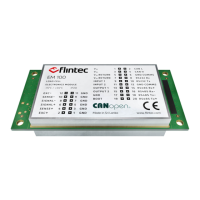EM100-F User Manual
0084293
Page 41 of 93
5.5. Taring & Zeroing Commands – SZ, RZ, ST, RT, SP, TMV, RMV
The following commands allow you to set/reset the zero and tare values. The zero set up during
calibration remains the ‘true zero’ but the new ‘current zero’ can be set up by using the ‘SZ’
command. If the ‘SZ’ command is issued and accepted, all weight values will then be based on the
new ‘current zero’. The zero value will be subject to the zero-tracking function if enabled. If the
weight signal is not ‘stable’ (as defined by the No-Motion range ‘NR’ and the No-Motion time ‘NT’)
then both the set zero ‘SZ’ and set tare ‘ST’ commands will be disabled. Also, the Set Zero ‘SZ’
command is not allowed if the new zero value required and the ‘calibration zero’ differ by more than
2% of the ‘CM’ value (maximum allowable value).
5.5.1. SZ Set System Zero
This command sets a new ‘current zero’ which is then the basis of all weight values until further
updated by the zero-tracking function, another ‘SZ’ command or the ‘reset zero’ command ‘RZ’.
The ‘SZ’ command will fail (responding with ‘ERR’) if the new ‘current zero’ is more than 2% (of the
‘CM’ value) higher or lower than the ‘true zero’ set during calibration. The ‘SZ’ command will also
fail if the weight signal is not ‘stable’ as defined by the no-motion range (‘NR’) and the no-motion
time (‘NT’). If the weight signal is ‘stable’, the response to the Device Status command (‘IS’) will
show the ‘signal stable’ bit active and the ‘SZ’ command will be accepted (‘OK’). If the ‘signal
stable’ bit is not active, the ‘SZ’ command will be rejected and the EM100 will respond with ‘ERR’.
5.5.2. RZ Reset Zero
This command cancels the SZ command and the zero reading reverts to that set by the ‘CZ’
command during calibration.
The EM100 responds to the ‘RZ’ command with either ‘OK’. If ‘OK’ is returned, the ‘zero action
performed’ bit in the Device Status (‘IS’) response will be set to ‘0’.

